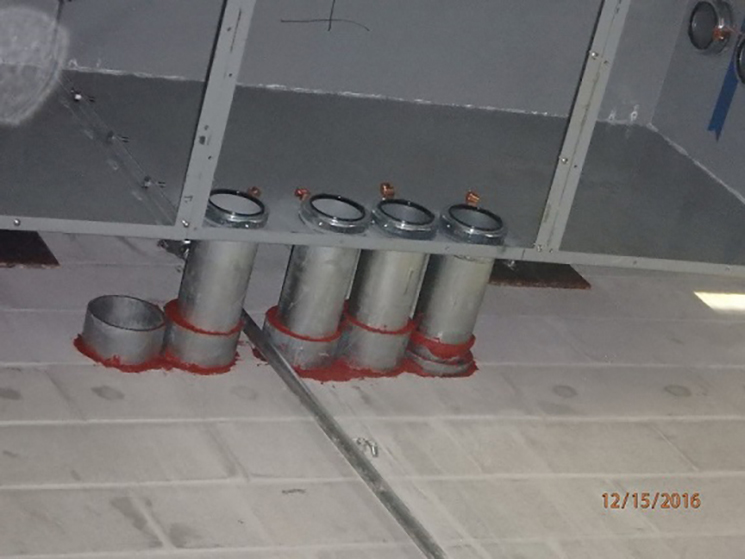There is a new special inspection requirement in the 9th Edition that owners, developers, contractors, and Authorities Having Jurisdiction (AHJ) will want to be prepared for when the new code comes into effect. Section 1705.17 of the 2015 Edition of the International Building Code (IBC), which is the basis of the 9th Edition, requires a special inspector for through-penetrations, membrane penetration firestops, fire-resistance joint systems, and perimeter fire barrier systems that are tested and listed where required by Ch. 7 of the Code.
Where does the requirement apply?
The new requirement will apply to high-rise buildings and to buildings assigned a risk category of III or IV per Section 1604.5 of the IBC. This table includes occupancies such as large assembly with occupant loads in excess of 300, educational occupancies with occupant loads over 250 occupants, most hospitals, jails/prisons, buildings with Group H, High Hazard Occupancies, and facilities housing emergency responders, among others. The requirement applies to any joint (i.e. head of wall intersection with floor construction), through penetration or membrane penetration of fire resistance rated walls, floors, and ceilings as specified on the project construction documents.
How do I know if I am installing the right firestopping prior to inspection?
Firestopping systems are approved assemblies and not products. The assemblies consist of the wall /floor construction itself, the penetrating item(s) or joint details, and the firestopping components utilized. The assemblies utilized are required to meet certain fire test standards and be listed by an approved testing agency. The tests illustrate that the specific assembly listed has passed the required fire test standard for a specified amount of time (i.e. 1-hour). The inspector’s role is to compare the installations viewed in the field with the details of the approved assemblies. All firestopping assemblies utilized should be included in an approved submittal for both the installer’s and inspector’s use.
How must the Inspections be Performed?
The code states that the inspections are to be performed in accordance with two ASTM Standards; ASTM E2174 governs penetration firestop systems and ASTM E2393 applies to joint systems. Some highlights on how the inspections are to be performed include:
- Inspector is to witness the installation of 10% of each type of firestop system or perform destructive testing of 2% of each type of firestop system per floor or for each area of a floor when a floor is larger than 10,000 ft2.
- Complete submittals showing all listed firestop assemblies are required to be provided to the inspector before they perform their inspections. This includes any engineering judgements that may be needed for assemblies which don’t meet all the details of a listed assembly.
Who can serve as the special Inspector?
The IBC states that the inspections are to be performed by an approved agency, which is defined as “An established and recognized agency that is regularly engaged in conducting tests or furnishing inspection services, where such agency has been approved by the building official.” The ASTM standards provide additional guidance on the qualifications of an inspector and state that an inspector should have a minimum of 2-years experience in construction field inspections and have education, credentials, and experience that is acceptable to the authorizing authority. The document goes on to address conflicts of interest and stipulates that the inspector should be independent from and not in competition with the manufacturer, contractor, installer, and supplier of the firestopping products.
The engineers at Code Red Consultants are all degreed fire protection engineers and have been engaged in performing fire stop inspections and evaluating firestop assemblies for over a decade. If we can be of assistance in evaluating if this requirement applies to your project or serving as the special inspector please do not hesitate to contact us.


